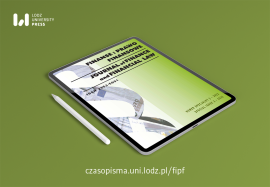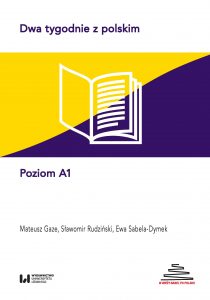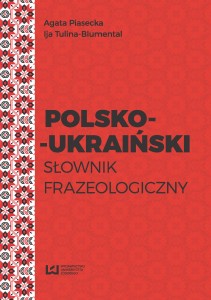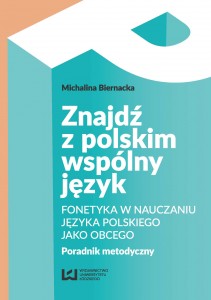Finanse i Prawo Finansowe / Journal of Finance and Financial Law | Vol. 4 No. 36 + Special Issue 2
Opublikowano: 21 lutego 2023

Kwartalnik JoFFL jest recenzowanym czasopismem naukowym, w którym zamieszczane są oryginalne artykuły naukowe, często łączące teorię z praktyką, odnoszące się do finansów oraz powiązanych z nimi dziedzin. Łamy czasopisma są otwarte również dla przedstawicieli nauk prawnych, którzy podejmują tematykę regulacji finansowych.
Celem czasopisma jest promowanie i publikowanie wyników badań z zakresu finansów, inspirowanie autorów, a także czytelników, do lepszego zrozumienia, zdefiniowania i wyjaśniania ważnych, w szczególności bieżących zjawisk oraz mechanizmów finansowych. Zadaniem czasopisma jest: udostępnienie forum do upowszechniania rezultatów badań oraz wymiany opinii, prezentacja indywidualnych i zespołowych dokonań naukowych.
Redakcja prowadzi stały nabór artykułów do czasopisma Finanse i Prawo Finansowe.
The JoFFL quarterly is a peer-reviewed scientific journal that publishes original research articles, often combining theory with practice, relating to finance and related fields. The journal is also open to representatives of legal sciences who take up the subject of financial regulations.
The aim of the journal is to promote and publish the results of research in the field of finance, inspiring authors, as well as readers, to better understand, define and explain important, in particular current financial phenomena and mechanisms. The task of the journal is to provide a forum for dissemination research results and exchange of opinions, presentation of individual and team scientific achievements.
The editors are constantly recruiting articles for the journal JoFFL.
W numerze 4/36 | Inside Vol 4 No. 36:
Międzynarodowe normy płynności jako uzupełniające miary bezpieczeństwa banku oraz sektora bankowego | International Liquidity Standards as Complementary Measures for Bank and Banking Sector Security
Ivanna Chaikovska
The purpose of the article is to assess the security of Polish listed banks and the entire banking sector in terms of their liquidity. This article characterizes the liquidity of the Polish banking sector and Polish listed banks in the years 2009–2019.
Methodology. The analysis was based on post-crisis LCR and NSFR liquidity ratios. The calculations used the financial data provided by the Bank Focus database, the Polish Financial Supervision Authority and consolidated financial statements of Polish listed banks. To achieve the set objective were used methods of comparing documents and legal acts (especially in the part of the article concerning the characteristics of the international standards of liquidity) and the methods of descriptive statistics (in the empirical part of the article).
Results of the research. The above analysis is the basis for the verification of the hypothesis that international liquidity standards increase the level of security of Polish listed banks and the entire banking sector.
Cena emisyjna w pierwszej ofercie publicznej a przyczyny wykluczenia spółki z NewConnect | The Issue Price in the Initial Public Offering and the Reasons for Excluding the Company from NewConnect
Sylwia Frydrych
The purpose of the article. The subject of this article is the analysis of the change in the share price on the day of the company’s debut on the NewConnect market due to the reasons for its exclusion from trading. The analysis was carried out for all companies debuting on NewConnect in 2007–2020. The results are presented depending on the share issue price. The paper hypothesized that companies whose share issue price was incorrectly estimated, which means overvalued or undervalued IPO, are more often withdrawn from the NewConnect market.
Methodology. The research was carried out using the analysis of source data. In the research process, the author used, in addition to the analysis of the literature, the method of observation.
Results of the research. As a result of the research, it was found that 39.84% of companies that debuted on the NewConnect market in 2007–2020 were excluded from trading. 56.28% of the withdrawn companies were forcibly excluded. On the other hand, 108 companies were withdrawn from trading voluntarily, and the prevailing premise in this group of entities was the transfer of the company to the WSE Main Market. Voluntary reasons prevail among entities withdrawn from trading, whose shares had an issue price of PLN 5 and higher. On the other hand, in the group of “penny” companies, the main reason for delisting is the safety of trading and liquidation bankruptcy. An increase in the share price on the debut day was recorded in 69.64% of entities withdrawn from NewConnect. The adopted hypothesis was positively verified. Companies whose share issue price was not properly estimated were withdrawn from the NewConnect market more often than entities whose securities price did not change on the day of their debut. The level of withdrawn companies whose IPO was overvalued and undervalued is similar. The conducted research proves that among overvalued initial public offerings, the share of voluntary reasons for withdrawal prevails, while among undervalued ones there is a higher share of forcibly excluded entities. However, the amount of the issue price according to the ranges adopted in the study does not constitute a premise for the withdrawal of companies from the NewConnect market.
Unethical Advertising Practices in the Financial Market and Counteraction Tools
Zofia M. Mazur
The purpose of the article/hypothesis. Paper highlights certain crucial aspects of misleading and deceitful advertisings of banking and financial products and services, its effects, and the necessity to ban and/or restrict some of professionals’ misbehaviours. Many research evidence shown how an endless amount of information and specific advertisements can influence consumers’ financial decision-making. This concern was intensified by the impact of COVID-19 on the financial situation of many households.
Methodology. Author has conducted extensive research using national and international literature, public reports, legal cases, administrative proceedings, national and international legislations. There are presented some national examples, good principles and suggestions of what should be done to better protect the customers on the banking and financial market.
Results of the research. The study revealed that the misleading, abusive conducts and numerous sales strategies of professionals operating on the markets at issue may regard almost any individual. Unethical advertising practices may intensify because of ever-increasing technology and new advertising techniques. As described, both the type and the timing of the advertising can also greatly influence consumers’ choice. The policy makers shall be determined, decisive and fast in order to assure that financial products and services are safe and law-compliant, to raise standards in advertising sector, to prevent defaults, irresponsible borrowing, loss of privacy, discrimination, failures and predatory practices. The measures shall prevent the frauds and the marketing and sales strategies of a set of unrealizable promises or products unsuited to the needs of customers on the financial advertising market.
Mineral Resource Taxation in Poland as Environmental Revenue
Artur Ochot
The purpose of the article/hypothesis. The statistics on environmental taxes in Poland lack a very specific resource taxation in form of the tax on extraction of certain minerals and the exploitation levy, which is the subject of this article. This paper aims to provide a proof that these taxes should be considered environmental in nature and as such are required to be reported by the European law. Thus, the article suggests and recommends that national environmental tax revenues data should be corrected.
Methodology. First, the law and literatue overview is presented, taking view on the characteristics of environmental taxes and placing those taxes that are subject of this article into this category. Next, fiscal importance of those taxes is measured within budgets of its receivers. Additionally, the article provides the information on how much environmental tax statistics would have changed after taking into consideration the taxes discussed in this article. The research period of this study is 2012–2020. It is dictated by the introduction of tax on certain mineral extraction and the latest budget reports available. The research is limited by the accessibility of public data which does not provide separate accounts of hydrocarbon taxes (which should be excluded from environmental data) and taxes on other minerals.
Results of the research. The overview of the literature provides some evidence that the exploitation levy should be treated as a tax and, together with the tax on certain mineral extraction, should be treated as environmental in nature. Thus, they should be implemented in national environmental tax statistics. Although majority of environmental tax revenues is made by taxes on energy, the result of this implementation would significantly change values of taxes on pollution and resources, making it second (out of three) most important category within environmental taxes in Poland.
Zofia M. Mazur
The purpose of the article/hypothesis. The present contribution is focused on the lending market, its credit products, and actors, with particular regard to the non-bank small-dollar lenders and the underserved borrowers. The purpose is to analyze some of the specific small-dollar loans and related legislative initiatives from the American and European financial markets which may constitute remedies to the problem of predatory lending.
Methodology. The analysis was based on the legal and administrative acts and documents as well as on the doctrine related to the topic examined.
Results of the research. The study revealed that the misleading, abusive conducts and numerous sales strategies of professionals operating on the banking market may regard almost any individual. These unethical practices have intensified during the pandemic, becoming particularly dangerous.
Radosław Witczak
The purpose of the article/hypothesis. The purpose of the paper is the evaluation of using STIR to blockade the bank account by tax administration. The research hypothesis is as follows: The blockade of the bank account by the use of STIR is abused by tax administration.
Methodology. The descriptive study including critical attitude to legal acts and literature was used as well as the case studies of SAC’s decisions were applied as scientific methods.
Results of the research. Tax frauds in VAT are an important problem of security of taxpayers. One instrument to combat them is the blockade of bank account by the use of STIR. Tax authorities very seldom use the blockade of bank account by the use of STIR. The analysis of SAC’s decisions shows that tax authorities do not abuse this instrument. The blockade of bank account by the use of STIR decreases tax frauds and increases the security of taxpayers.
The Impact of Asset Structure on a Company’s Financial Results Stability
Artur Zimny
The purpose of the article is to examine the impact of asset structure on the stability of financial results of companies. The article verifies two hypotheses: 1. high share of non-current assets in total assets results in high volatility of profitability over time. 2. high share of PPE (Property, Plant & Equipment) in total assets results in high volatility of profitability over time.
The methodology of the study includes a literature review and empirical research based on correlation analysis. The research covered the aggregated data of Polish non-financial enterprises employing 10 persons or more keeping accounting ledgers, data for years 2009–2020 (first dataset) and annual financial data of 115 companies from 13 WSE industry sub-sectors for years 2009–2021 (second dataset).
The results of the research. The analysis of the asset structure and the volatility of profitability in the research sample indicated industries with large and small values of these parameters. Then, the hypotheses were tested; the results for the second dataset showed that there is a positive and weak, but statistically significant (p value ≤ 0.005) correlation between non-current asset structure ratio and both, ROS and ROS adjusted ratios, and there is a weak, but negative correlation between PPE structure ratio and ROS and ROS adjusted ratios (with p value of 0.021 and 0.076, respectively). On this basis, hypothesis 1 was considered as verified positively, and hypothesis 2 was rejected. The discussion contains suppositions concerning the probable reasons of the discrepancy between the result for the hypotheses 1 and 2.
Inclusiveness of Financial Activities of Hotel Institutions during the Covid-19 Pandemic
Yuliia Melnychuk, Liudmyla Chvertko
Scientific work on “Inclusiveness of Financial Activities of Hotel Institutions During the Covid-19 Pandemic” aims to conduct a financial analysis of the state of the hotel services market in Ukraine and the world during the period of active progression of the Covid-19 virus infection.
The purpose of the article. The aim of the work was to study the peculiarities of the financial development of the hotel industry in the pandemic in the world and in Ukraine.
The methodology. The totality of research methods is a methodology for analyzing and organizing the main legislative acts and laws, namely the methods of generalization, comparison, chronology, analysis and generalization. Segment diagramming, elements of financial analysis, as a digital display of the state of the economic level of development are used to visualize the state of the hotel business market.
The results of the research. The study analyzes the level of change in sales revenue from the hotel business in Ukraine. The regions of Ukraine were divided into the main tourist regions and the structure of accommodation facilities by types and specialized accommodation facilities have been developed.
The scientific work considers the hotel industry as elements of the market of services of Ukraine, so the distribution of accommodation is divided into in the following regions: central region, northern region and western and southern regions. The location of hotel business establishments is appropriately structured.
Conclusions that were made indicate the need to improve the quality of services while expanding their range, which is due to the ever-increasing demands of consumers in accordance with the requirements of advanced technologies. A significant expansion of the range of accommodation (apartments, villas, holiday homes, country and guest houses, chalets, etc.) will best guide different groups of tourists and diversify the types of recreation.
The presented paper depicts relevant and necessary research that will help hotel business leaders to respond in a timely manner to financial threats. During the Covid-19 pandemic, it is important to monitor the state of the Ukrainian services market, timely implement all possible security measures and prevent the impact of adverse factors on the development of the hotel business.
Marta Paduszyńska, Radosław Witczak, Artur Zimny, Zuzanna Pakuła, Patryk Krykwiński
W drugim numerze specjalnym | Inside Special Issue 2:
Oszustwo podatkowe na przykładzie wystawienia fikcyjnych faktur VAT | Tax Fraud on the Example of Issuing Fictitious VAT Invoices
Piotr Kobylski
The purpose of this article. In the literature, you can find quite extensive studies on value added tax, while the issue of tax fraud on the example of issuing fictitious VAT invoices from the perspective of the effect of Art. 56 § 1 of the Act of September 10, 1999 – Fiscal Penal Code has been treated quite fragmentarily. The main research objective of this study is to characterize the impact of the above-mentioned legal regulation in determining the scope of its impact on the tax law system. The work will prove that it is actually unjustified to maintain the current structure of the model of the right to deduct this tax. In connection with the above, the aim of the work will be to assess the directions of changes in the analyzed institution against the background of the applicable legal provisions.
Methodology. It was created on the basis of an analysis of the content of legal acts and documents as well as studies of the subject literature.
The result of the research. The taxpayer should not be held responsible for unlawful actions of third parties with regard to the fulfillment of the tax obligation in the tax on goods and services. Based on the considerations, it can be concluded that as long as the current structure of the model of the right to deduct tax on goods and services is maintained, this issue will still remain open.
Sale of Getback Bonds as an Example of Misselling
Dominik Kubacki
The purpose of this article. The purpose of this study is to identify the occurrence of misselling in the process of offering and selling corporate bonds of GetBack SA.
Methodology. The study included a literature review, analysis of secondary data derived from official documents such as decisions issued by the President of the Office of Competition and Consumer Protection, reports of the Supreme Audit Office, and studies by the Financial Ombudsman.
The result of the research. The area where the phenomenon of misselling occurred is undoubtedly the case regarding the process of offering and selling bonds of GetBack SA. The circumstances of the case indicate that there were irregularities in the sales process, which consisted in misleading the customers about the offered products, which were not adapted to their needs and carried a high investment risk, disregarding their investor knowledge. Furthermore, in the opinion of the Office of Competition and Consumer Protection and the Financial Ombudsman.
Nieprawidłowości w sprzedaży łączonej i wiązanej kredytów mieszkaniowych i ubezpieczeń | Irregularities in Bundling and Tying Practices Home Loans and Insurance
Katarzyna Nowak
Banks, as part of cooperation with insurance companies, offer customers insurances. The of insurance is securing loan repayment. Polish Financial Supervision Authority (KNF) issued a number of reports on this subject. Identified by KNF numerous irregularities and the previous nonregulation resulted in 2014 r. publish Recommendation U. After the Recommendation U the national legislator as a result of the implementation of the directives introduced many significant changes in the area of bancassurance, which fundamentally changed the way banks offer insurance and strengthened the position of consumers. The idea of offering home loans with insurance is currently being realized as part of bundling and in certain situations also in tying practices and the position of the consumer is strengthened for example by information obligations imposed on banks.
The main purpose of the article is to present the definition of the concept, forms and the scope of its application by the search banks, causes and consequences of improper bundling and tying practices and to indicate repair solutions. The presented objective of the project fits in with the research gap in the literature on the subject. Currently, there are no studies that would analyze the consequences for consumers of bundling and tying practices insurance with a home loan.
Methodology. In theoretical part of the article author used analysis of the literature and a review of legal regularions. In order to determine the nature of irregularities occurring in the process of offering insurance by banks author used analysis how banks offers mortgage credit with insurance. Author also used in the article several examples of complains submitted by consumer to Financial Ombudsman in the years 2017–2021.
The result of the research. The research allowed to notice current irregularities that may indicate a violation of consumer interests on the bancassurance. The identified irregularities are occuring for example in offering insurance that is unsuited to the client’s needs, misleading or concluding a contract basing only verbal information. The mismatch of loan repayment insurance is largely due to deficiencies in the credit process.
Ocena poziomu bezpieczeństwa użytkowników rachunków bankowych i analiza zachowań banków w sytuacji wystąpienia incydentu zagrożenia bezpieczeństwa | Evaluating the Security of Electronic Banking in Users Opinion and Analyzing the Behavior of Banks in the Event of a Security Incident
Anna Popik, Agnieszka Gryglicka
The purpose of this article. The aim of the article is to identify the opinions of bank customers on the level of security of electronic banking in Poland and to analyze the actions taken by banks in the event of a security incident.
Methodology. The analysis was based on data collected through a questionnaire survey. The survey with non-random sampling involved 222 people, and 217 records were included in the analysis. The form contained closed questions.
The result of the research. The analysis of the survey results indicates a high sense of security among bank account users, especially thanks to campaigns initiated by banks that inform customers about possible dangers. Respondents value direct communication and quick responses, which in this age of technological advances are the most important element in protecting customers. The literature review, which complements the survey, also confirms the high commitment of banking institutions in ensuring security. Despite the analysis of the survey results, it is important to bear in mind the lack of their translation to the general population, which does not allow a clear confirmation of the total security of customers holding funds in bank accounts.
Insurance Market in the Light of Covid-19 Pandemic
Eleonora Ratowska-Dziobiak
The COVID-19 pandemic has been compared to world wars or other tragic events in terms of the death toll it has taken and huge economic losses it has caused. It is not a finished process, so it is difficult to predict the scale of its impact. According to IMF estimates, the contraction of the world economy will be much greater than in the years of the financial crisis of 2008–2009. The negative effects in different countries may depend on the severity and extent of the applied lock-down or interventions undertaken by governments. Changes taking place in various sectors of the economy are of a different nature. The effects of the pandemic can be also seen in the insurance segment.
The aim of this article is to find answers to the following research questions:
- To what extent did the COVID-19 pandemic affect the situation on the insurance market?
- In which areas are its consequences particularly visible?
- What kind of opportunities and threats does the pandemic bring from the perspective of the insurance market?
Methodology. The analysis used available scientific publications, reports prepared by the Polish Financial Supervision Authority, Polish Insurance Association and entities conducting brokerage activities or selected consulting companies.
The result of the research. In a few days, in March 2020, a real revolution took place on the insurance market. The insurers faced the need to introduce completely remote customer service. They also had to launch new tools, which in many cases were still in the testing phase and which they did not have the opportunity to use on a large scale. With the onset of the pandemic, they were quickly implemented. It was related to additional funds, huge commitment and discipline of all employees, liquidators, agents, sales departments, and administration. Consequent on this, clients gained full access to all services and insurance products, without leaving home. On the other hand, pandemic has led to the significant changes within the demand for the insurance services and customers’ expectations, but also to growing scale of damages and compensation paid to the clients leading to the higher insurance premiums.
The Fraudulent Phenomenon of the Financial Pyramids in the Financial Industry
Natalia Ślusarek
The purpose of the article is to present the fraudulent behaviour observable in the financial industry, which is the financial pyramid phenomena, through a detailed description of such occurrences together with the damage and consequences generated. This paper will include a solid piece of knowledge about this behaviour, and will also distinguish the similarities and differences between financial pyramids.
Methodology of this paper is the critical analysis of the literature and comparative analysis of selected pyramids according to the criteria to compare and distinguish similarities and differences.
Results of the research confirm that the phenomenon of the financial pyramids is very harmful to the financial industry but also to the participants and society as a whole. The losses generate every year are enormous, but on the other hand, there is suffering of the victims as well. To conclude, the financial pyramids are inseparable elements of the financial industry and moreover, they are very dangerous and destructive. The knowledge of the specificity of pyramids increases the safety of financial consumers in the financial market.
Rozwój sztucznej inteligencji i jej wpływ na rynek finansowy | The Development of Artificial Intelligence and its Impact on the Financial Market
Arkadiusz Tomaszek
The purpose of this article. The aim of the article is to analyze selected issues related to artificial intelligence and its development, particularly its impact on the financial market, taking into account the opportunities and threats that artificial intelligence and its areas, such as machine learning or deep learning, pose to financial market participants. The research methods utilized in the study were used to evaluate the phenomenon on a macroeconomic scale.
Methodology. The results of the research were based on the analysis of secondary data, such as source literature – both domestic and foreign, systems analysis of European Union legal acts, as well as the review of reports on the use of AI within the financial market. The paper is theoretical.
The result of the research. The development of artificial intelligence in financial markets may provide an opportunity to gain competitive advantage, especially for financial market participants who aptly implement AI-based solutions in its initial phase. However, this entails both benefits and risks, the possible occurrence of which depends on many other factors.
Radosław Witczak
The purpose of this article. The purpose of the paper is to compare and assess provisions on premises for recognizing tax books as kept not compliant to the regulations in the tax law and accountancy law as well as to discuss the possibility of using the tax judgments on this issue in the interpretation of compliant account books in the accountancy law. The research hypothesis is as follows: The tax judgments on the premises for recognizing tax books as kept not compliant may be also used directly for the interpretation of compliancy of account books in the accountancy law.
Methodology. The descriptive study including critical attitude to the legal acts and literature was used to solve the research problem.
The result of the research. Both the tax law and accountancy law comprise the rules for recognizing tax books (account books) to be compliant to the regulations. The tax law uses the terms of the reliability and correctness. The Accountancy Act law uses the terms of the reliability, error-free, verifiable manner and on an on-going basis. Although definitions of reliability are very similar, as the analysis shows, the character of reliability of tax books is not always the same as for account books. The judgments in the field of interpretation of the reliability for tax purposes may not always be used for accounting purposes. The term correctness in the Tax Ordinance does not always correspond to the terms: error-free, verifiable manner and on an on-going basis in the Accountancy Act. So, the tax judgment concerning correctness of the tax book from the tax law cannot be directly applied into the interpretation of such terms as error-free, verifiable manner and on an on-going basis in the accountancy law. The paper additionally proposes some changes to the tax law concerning the unreliability of tax books, as well as changes to the Accountancy Act.
Komentarze
Ten post dostępny jest także w języku: angielski





